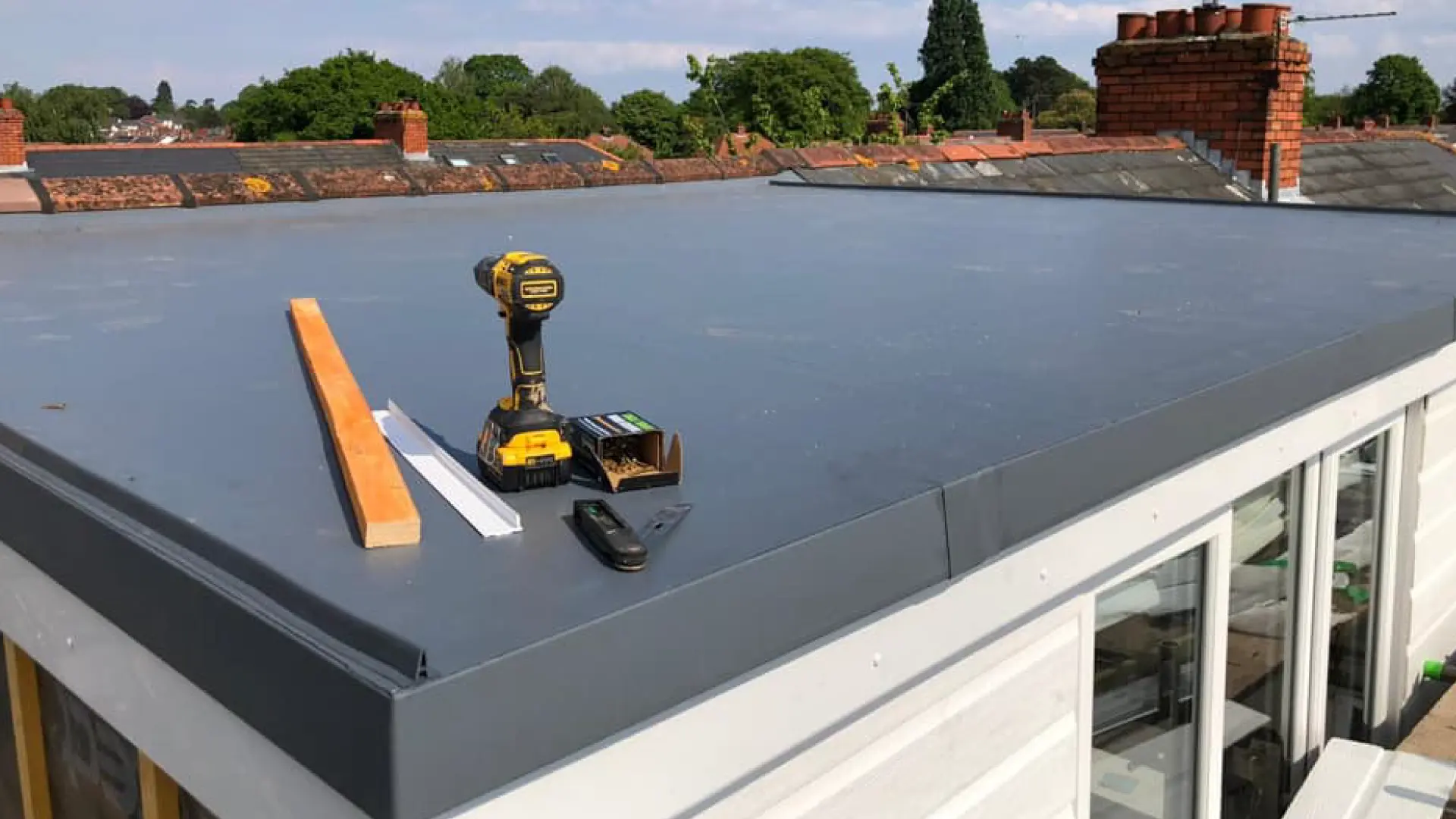Flat Roof Systems

Benefits and Versatility of Modern Flat Roof Systems for Your Property
Flat roof systems are a popular choice for both residential and commercial properties due to their modern aesthetic and practical benefits. Unlike pitched roofs, flat roofs offer a sleek, contemporary look and maximize usable space on top of the building.
They are particularly advantageous for areas with minimal rainfall, as they can be designed to handle drainage effectively. Modern flat roof systems use advanced materials and techniques to ensure durability, energy efficiency, and easy maintenance.
Elite Roofing and Solar specializes in installing and maintaining flat roof systems that provide long-lasting protection and enhance the functionality of your property.
Types of Flat Roof Systems
There are several types of flat roof systems, each with unique properties and benefits.
EPDM (Ethylene Propylene Diene Monomer): A rubber roofing material known for its flexibility, durability, and resistance to UV rays and weathering. It is a popular choice for its ease of installation and maintenance.
TPO (Thermoplastic Olefin): A single-ply membrane that provides excellent heat resistance and energy efficiency. TPO roofing is known for its reflective properties, which help reduce cooling costs.
PVC (Polyvinyl Chloride): Another single-ply roofing option with strong resistance to chemicals and moisture. PVC is durable and suitable for areas with high exposure to harsh conditions.
Benefits of Flat Roof Systems
Flat roof systems offer several advantages that make them a preferred choice for many property owners. One significant benefit is their cost-effectiveness.
The simple design of flat roofs often results in lower installation and maintenance costs compared to pitched roofs. Additionally, flat roofs provide valuable additional space for rooftop gardens, solar panels, or recreational areas.
They are also easier to access for maintenance and repairs, reducing overall upkeep efforts. Modern flat roofing materials, such as EPDM, TPO, and PVC, offer excellent durability and resistance to various weather conditions, ensuring long-term performance.
Key Features of Flat Roof Systems:
- Cost-Effective: Lower installation and maintenance costs compared to pitched roofs.
- Usable Space: Provides additional space for rooftop gardens, solar panels, or recreational areas.
- Ease of Access: Simplifies maintenance and repair efforts.
- Durable Materials: Modern materials like EPDM, TPO, and PVC offer excellent performance and weather resistance.
- Energy Efficiency: Reflective materials help reduce cooling costs by minimizing heat absorption.
FAQs
Flat roof systems offer cost-effectiveness, additional usable space, ease of maintenance, and durability. They also provide opportunities for installing rooftop gardens or solar panels.
The lifespan of a flat roof system varies depending on the material used. EPDM roofs typically last 20-30 years, while TPO and PVC can last 15-25 years with proper maintenance.
Common materials include EPDM (rubber), TPO (thermoplastic), and PVC (polyvinyl chloride). Each has unique properties regarding durability, energy efficiency, and resistance to weather conditions.
Flat roofs are designed with a slight slope or a drainage system to ensure water is directed toward drainage points. Proper installation and maintenance are crucial to prevent pooling and leaks.
While flat roofs can be more susceptible to leaks if not properly maintained, modern materials and installation techniques are designed to provide effective waterproofing and durability. Regular inspections and prompt repairs help mitigate leak risks.
